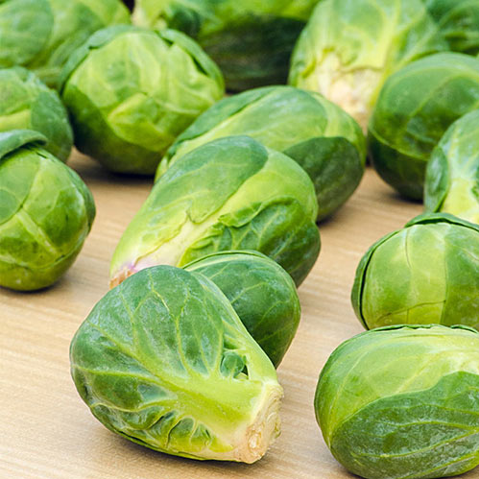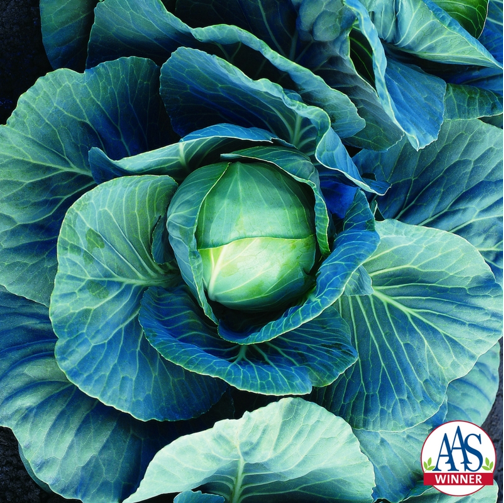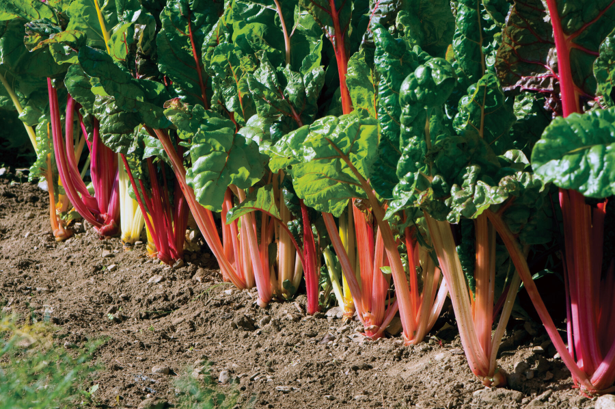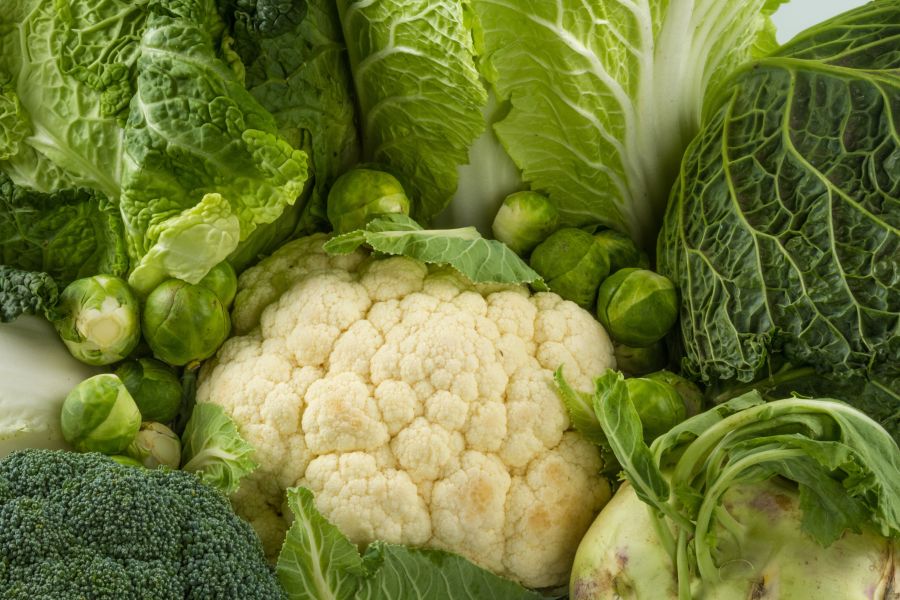Cole crops, at a basic level, are plants that belong to the mustard (Brassica) family, also called “cruciferous”. As a group, these plants grow better in cool weather. This leads many people to think that the word “cole” is a variation of the word “cold” and they may even refer to these plants as cold crops.
- Cole Crops are vegetables that thrive in cold or cool weather.
- Warm-season crops such as tomatoes and peppers will usually be killed by frost.
- Cole crops can be planted before the threat of frost has passed.
- In fact, many cole crops will ‘bolt’ or produce unwanted flowers in the heat of summer, causing a bitter flavor to the foliage.
- Cole crops offer numerous nutrition benefits and are often used as a carb substitute.
All the cole crops offered at Gertens are started from seed in our greenhouses and sold in 6-pack flats or plug trays. Please note that varieties are subject to change due to seed availability.
BROCCOLI ‘PREMIUM CROP’
Broccoli plants grow upright, often reaching a height of 2 1/2 feet.
- Plant 24 inches apart, with 36 inches between rows.
- Green buds develop first in one large central head and later in several smaller side shoots.
- Broccoli can usually be harvested for several weeks.
- Fertilize at planting and again when the plants are half grown.
- Provide ample soil moisture, especially when heads are forming.
BRUSSELS SPROUTS ‘JADE CROSS’
Brussels sprouts are hardy, slow-growing, long-season vegetables.
- Sprouts improve in quality and grow best during cool or even lightly frosty weather.
- Plant 24 inches apart.
- The small sprouts or buds form heads one to two inches in diameter.
- They may be picked (or cut) off the stem.
- Fertilize at planting and again halfway through the season.
- Water regularly to keep the crop growing vigorously during the heat of summer.

‘Jade Cross’
CABBAGE
The cabbage we grow today is descended from wild cabbage.
‘DYNAMO’
Small blue-green cabbage the perfect size for one meal at 2 to 2-1/2 pounds. Saves space in the garden, also very heat tolerant. Slow to bolt, harvest over a long period of time. Even under stressful growing conditions such as severe heat, Dynamo plants produce a high quality, dense cabbage head with a mild cabbage flavor.
‘RED ACRE’
A top-notch red variety used raw, cooked or in coleslaw. Heads are deep red, globe shaped, 6 to 7 inches in diameter. Provides a sweet flavor, perfect for small space gardening and is resistant to cabbage yellowing
- Space plants 12 to 24 inches apart in the row.
- Ample soil moisture is necessary.
- Protect young plants from direct sun.
- Plants will mature in about 70 days from transplanting.
- Cut the cabbage heads when solid (firm to hand pressure) but before they crack or split.

‘Dynamo’
CAULIFLOWER ‘SNOW CROWN’
Cauliflower has taken on a whole new following as it’s used as a substitute for carbs in everything from pizza crusts to pasta. 'Snow Crown’ is one of the easiest cauliflowers to grow. Always sweet, always mild. It offers quick growth and strong vigor. Fully domed white heads are up to 8” across and weigh 1 to 2 lbs. The plants produce big yields of fully domed, white heads.
Cauliflower should be planted early enough that it matures before the heat of the summer, but not so early that it is injured by the cold.
- Space plants 18 to 24 inches apart in the row.
- Cauliflower must have a consistent and ample supply of soil moisture.
- When the head shows 2 to 3 inches of white curd, tie the outer leaves together over the center of the plant.
- From then, it is ready to harvest within 7 to 12 days.
KALE
Packed with vitamins and minerals, Kale has been cultivated for culinary purposes since ancient Greece and is among the easiest vegetables to grow. Plant in a sunny location. Use kale in soups and vegetarian main dishes.
KOHLRABI
Kohlrabi is very easy to grow, producing high yields in limited space. The edible portion is a rounded, enlarged stem section growing just above the soil line.
‘WINNER’
Bulbs are crisp and very flavorful. The best tasting white Kohlrabi on the market. Tasty raw in salads and slaw, or cooked lightly. Holds well in the field without splitting. An excellent choice for home gardens
- Kohlrabi can be transplanted into the garden as soon as the ground becomes workable.
- Place 5" apart.
- Begin harvesting (pull or cut at ground level) when the first stems are about one inch in diameter.
LETTUCE
Gertens offers Romaine, Salad Mix and Leaf lettuce varieties. Follow planting instructions on the label.
- Lettuce is best planted early, before hot weather arrives, as hot weather will cause the leaves to become bitter.
- Harvest outer leaves as soon as they are large enough for use.
- A second fall crop can be planted indoors around July 15 and outside August 10.
With a mild fall, lettuce can be grown until Thanksgiving!
SWISS CHARD
Swiss Chard belongs to the same family as beets and spinach. It has the bitterness of beet greens and the slightly salty flavor of spinach leaves. While both the leaves and stalk of swiss chard are edible, the stems vary in texture with the white ones being the most tender. Besides its culinary value, Swiss Chard can also be grown simply for its ornamental fan-like leaves with white, red, or yellow stems and midveins.
‘Bright Lights’
The gold standard for multicolored Swiss chard. Green or bronze leaves with stems of gold, pink, orange, purple, red and white with bright and pastel variations. Consistent growth rate and strong bolt resistance across all colors makes this a superior mix.
- Space plants 4 inches apart in rows 18 to 24 inches apart.
- Harvest mature leaves individually for home garden.
- New leaves will grow multiple harvests.
- For baby leaf, clip young plants just above the soil. Multiple harvests are possible because the plants will grow new stems and leaves.

‘Bright Lights’
The experts at Gertens are always available to answer your questions!

